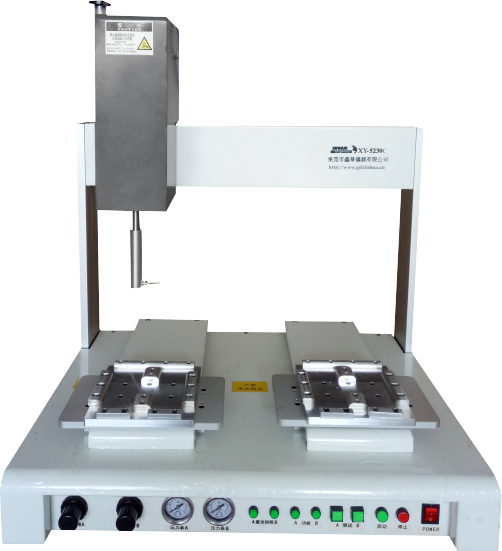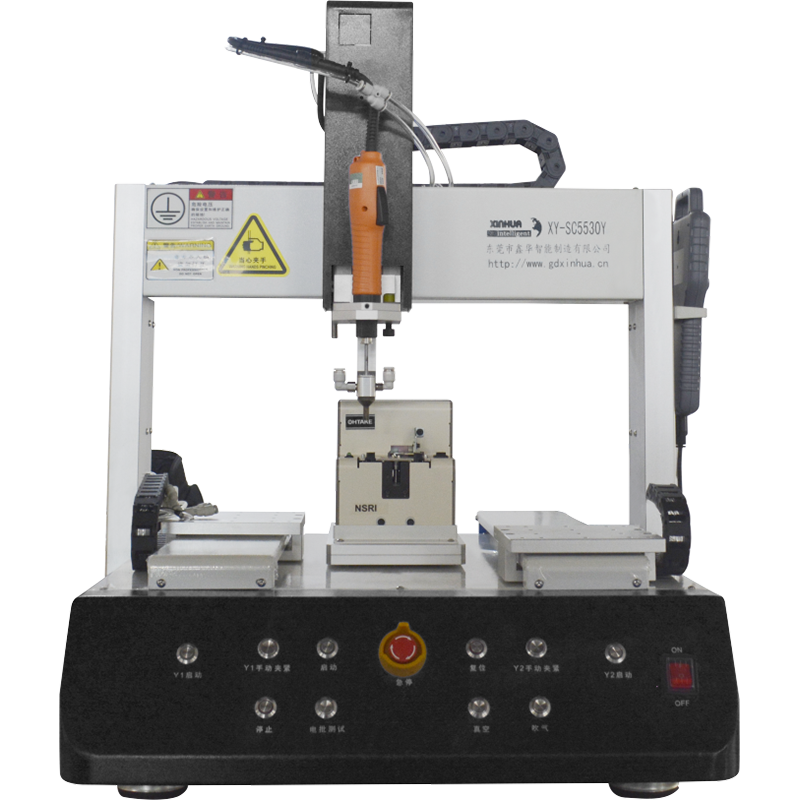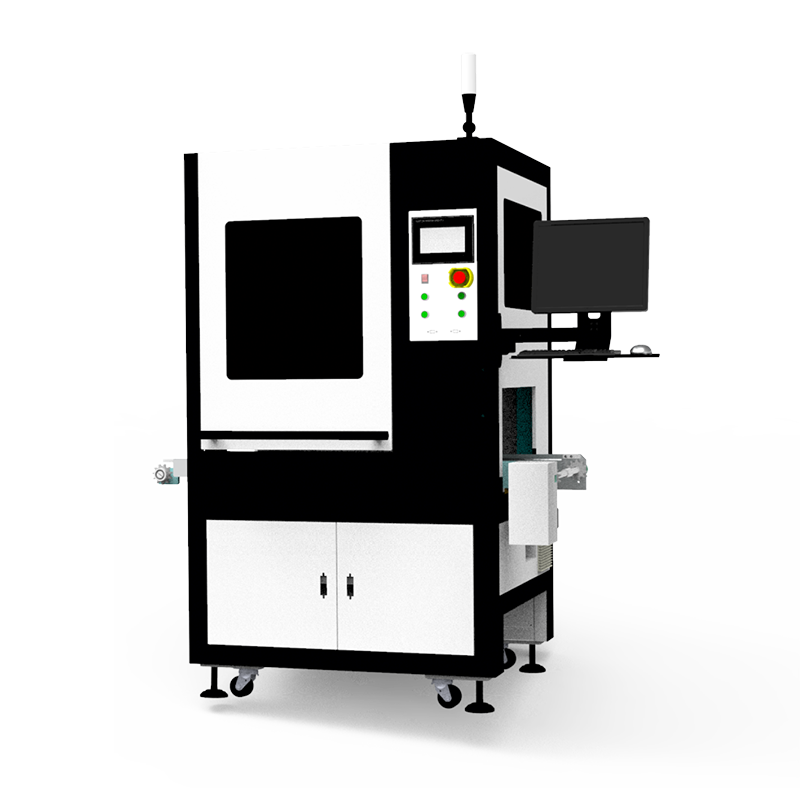 ×
×
Klebe-Potting-Maschinen sind Schlüsselwerkzeuge in der Fertigung, die für die Verteilung von Klebstoffmaterialien in verschiedenen Prozessen entwickelt wurden. Sie sorgen dafür, dass Kleber genau und effizient aufgetragen werden, was für die Montage elektronischer Geräte, die Versiegelung von Komponenten und den Schutz empfindlicher Gegenstände unerlässlich ist. Im Laufe der Jahre haben sich diese Maschinen erheblich weiterentwickelt und haben sich an die vielfältigen und sich ständig verändernden Bedürfnisse der verarbeitenden Industrie angepasst. Die anfangs manuell und umständlich arbeitenden modernen Klebe-Potting-Maschinen verfügen heute über automatisierte Systeme und eine höhere Präzision, was sie in der heutigen schnelllebigen Produktionsumgebung unverzichtbar macht.
Die Entwicklung der Technologie hat Klebe-Potting-Maschinen entscheidend für die Automatisierung und Effizienz gemacht. Da sich die Industrie in Richtung einer hohen Produktionsmenge mit strengen Qualitätskontrollen bewegt hat, ist die Rolle der Klebe-Potting-Maschinen bei der Erfüllung dieser Anforderungen gewachsen. Sie erhöhen nicht nur die Produktivität, sondern sorgen auch für Konsistenz und Genauigkeit, wodurch Verschwendung und menschlicher Fehler minimiert werden. Als Ergebnis werden diese Maschinen in Branchen wie Elektronik, Automobilindustrie und Konsumgüter immer wichtiger, wo die Nachfrage nach zuverlässigen Klebstoffen kontinuierlich steigt.
Die Klebe-Potting-Maschinen haben die Elektronikindustrie revolutioniert, wo sie häufig für das Verputzen und Verkapseln von Leiterplatten eingesetzt werden. Diese Maschinen sorgen dafür, daß elektronische Komponenten vor Feuchtigkeit, Staub und physikalischem Schaden geschützt werden. Durch die präzise Abgabe von Klebstoff liefern sie eine Schutzschicht, die die Haltbarkeit und Funktionalität der Komponenten verbessert, was für empfindliche Elektronik, die häufig behandelt und in unterschiedlichen Umweltbedingungen ist, von entscheidender Bedeutung ist.
In der Automobilindustrie spielen Klebe-Potting-Maschinen eine entscheidende Rolle bei Komponenten, die eine Wasserdichtung oder Isolierung erfordern, wie z. B. Sensoren und elektrische Teile. Die Fähigkeit, Isolierstoffe gleichmäßig aufzutragen, stellt sicher, dass Fahrzeugkomponenten unter rauen Straßenbedingungen zuverlässig funktionieren. Diese Anwendung erhöht nicht nur die Lebensdauer von Automobilteilen, sondern trägt auch zur Sicherheit und Leistung des Fahrzeugs bei.
Bei der Herstellung von LED-Beleuchtung sind Klebe-Potting-Maschinen aufgrund ihrer Langlebigkeit und Elektroisolation unverzichtbar. Sie werden verwendet, um LED-Treiber und -Schaltungen zu verkapseln, um eine lange Lebensdauer und Wärmeabbau zu gewährleisten. Durch die Verhinderung von Feuchtigkeit und Staub trägt diese Maschine dazu bei, die Leistung und Qualität von LEDs über längere Zeiträume hinweg zu erhalten und unterstützt sowohl Wohn- als auch gewerbliche Beleuchtungslösungen.
Die ZD5000 LED-Kleim-Potting-Maschine die von ZCX entwickelte Klebeaufnahme ist speziell für die LED-Industrie konzipiert und sorgt für eine präzise Klebeaufnahme für T8-LED-Röhren und LED-Soft-Streifen-Leuchten. Die Kommission hat SEC-S400-ZL - automatisches Vakuum-Potting-System in der Reihe ist für Anwendungen mit hoher Automatisierung und Präzision geeignet, ideal für die Herstellung von Automobil- und elektronischen Stromversorgungen. Diese Töpfermaschinen sind entscheidend, um die hohen Standards der modernen Elektronik-, Automobil- und Beleuchtungsindustrie zu erhalten.


Präzision und Genauigkeit bei der Verteilung von Klebstoff sind für ein optimales Ergebnis von größter Bedeutung. Bei der Auswahl einer Klebe-Potting-Maschine müssen die Hersteller die Industriestandards wie ISO 9001 einhalten, die sicherstellen, dass die Maschinenerzeugnisse strengen Qualitätsanforderungen entsprechen. Dies gewährleistet nicht nur qualitativ hochwertige Ergebnisse, sondern minimiert auch die Verschwendung, erhöht die Gesamtproduktionseffizienz und hält die Produktstandards aufrecht.
Die Integration programmierbarer Logikcontroller (PLC) in Klebepottenmaschinen verbessert ihre Funktionalität erheblich. Die PLC ermöglichen eine flexible und präzise Steuerung des Pottenprozesses und ermöglichen die Anpassung an verschiedene Materialviskosität und -muster. Diese Kontrolle sorgt dafür, dass jede Anwendung auf die spezifischen Fertigungsbedürfnisse zugeschnitten ist, Fehler reduziert und die Konsistenz der Ausgabe verbessert wird.
Eine benutzerfreundliche Schnittstelle ist für die Verbesserung der Betriebseffizienz und die Minimierung der Ausbildungszeit für das Personal von wesentlicher Bedeutung. Maschinen mit intuitiven Schnittstellen ermöglichen es den Bedienern, einfach Parameter festzulegen, Prozesse zu überwachen und Probleme schnell zu beheben. Diese Zugänglichkeit reduziert die Ausfallzeiten und ermöglicht es den Teams, die Ausrüstung effektiv zu bedienen und sicherzustellen, dass die Produktionspläne ohne unnötige Verzögerungen eingehalten werden.
Für Unternehmen, die hocheffiziente Operationen wünschen, ist die 5 Achsen-Automatik-Kleim-Disponierer ist eine ausgezeichnete Option. Diese Maschine zeichnet sich durch die Verpackung von Halbleitern, die Befestigung von elektronischen PCB-Teilen und die Verteilung neuer Energieprodukte aus. Seine Präzisionsfähigkeiten machen ihn ideal für komplizierte Aufgaben wie SMT-Industrieverteilung, LCD-Glas-organische Plattenverkapselung und Mobiltelefonplattenbeschichtung. Diese Vielseitigkeit sorgt dafür, daß Unternehmen in verschiedenen Anwendungen optimale Ergebnisse erzielen können.

Die maschinen mit 4-Achsen-Automatik-Schraubantrieb sind aufgrund ihrer Effizienz und Präzision für Montagelinien von Vorteil. Die Maschinen sind mit Doppelplattformen für einen nahtlosen Betrieb ausgestattet, wodurch die Zeit beim manuellen Austausch maximiert wird. Das automatische Lade- und Entlade-System optimiert die Arbeitskräfteverwertung und erhöht die Produktivität in verschiedenen Anwendungen.

Schließlich: Automatische Schraubverschlussmaschinen durch eine optimierte Integration in bestehende Produktionslinien ergeben sich deutliche Vorteile. Diese Maschinen arbeiten ohne manuelle Eingriffe, automatisieren Prozesse und sorgen für eine gleichbleibende Ausgabequalität. Sie sind mit hochpräzisen Servomotoren und kettenbetriebenem Getriebe integriert und sind ideal für Industriezweige wie Heizkörper, Beleuchtung und Elektronik geeignet.

Automatische Klebe-Potting-Systeme verbessern die Produktionseffizienz erheblich, indem sie die Aufbereitungsprozesse für Kleber optimieren und so die Ausgangsraten erhöhen. Diese Systeme verkürzen die Zykluszeiten und ermöglichen einen kontinuierlichen Betrieb, wodurch die mit manuellen Prozessen üblichen Ausfallzeiten minimiert werden. Nach Industrieforschungen kann die Umsetzung einer solchen Automatisierung zu Produktivitätssteigerungen von bis zu 30% führen, wodurch Unternehmen den höheren Produktionsanforderungen effektiver gerecht werden können.
Außerdem sorgen diese Systeme für Konsistenz und Qualitätssicherung durch die Verwendung fortschrittlicher statistischer Qualitätskontrollmethoden. Automatisierte Systeme sorgen für eine einheitliche Klebeauflage, die für die Aufrechterhaltung der Integrität und Leistungsfähigkeit des Endprodukts von entscheidender Bedeutung ist. Durch die Verwendung präziser Mess- und Abgabetechnologien können diese Systeme beispielsweise Toleranzniveaus von weniger als 1% erreichen und gewährleisten, dass jedes Stück strenge Qualitätsstandards erfüllt.
Außerdem reduziert die Integration automatisierter Klebe-Potting-Systeme in die Herstellungsprozesse die Abhängigkeit von manueller Arbeit und das damit verbundene Risiko menschlicher Fehler erheblich. Durch die Automatisierung wiederholter und präziser Aufgaben verbessern diese Systeme nicht nur die Genauigkeit, sondern erhöhen auch die Sicherheit der Arbeitnehmer, indem sie die Exposition gegenüber potenziell gefährlichen Stoffen minimieren. Die Hersteller können somit einen zuverlässigeren und kostengünstigeren Produktionsprozess erreichen und so sowohl den Arbeits- als auch den Materialverbrauch optimieren.
Die Wahl der richtigen Klebe-Pottmaschine erfordert eine gründliche Beurteilung Ihrer Produktionsanforderungen. Beginnen Sie mit der Bewertung der spezifischen Anforderungen an Ihre Produktionslinie, wie z. B. die verwendeten Materialien, das Produktionsvolumen und die Komplexität der Entwürfe, die Sie erreichen möchten. Dies hilft Ihnen dabei, Maschinen zu finden, die genau auf Ihre Anwendungs- und Produktionsanforderungen zugeschnitten sind.
Bei Investitionen in die Klebepottechnik sind Haushaltsüberlegungen von entscheidender Bedeutung. Es geht nicht nur um den Anfangsaufwand, sondern auch um den potentiellen Return on Investment (ROI), den die fortschrittliche Verteiltechnologie bieten kann. Hochwertige Maschinen erscheinen auf den ersten Blick zwar teuer, können aber Abfall erheblich reduzieren und langfristig die Effizienz steigern und so Kosten sparen.
Um eine fundierte Entscheidung zu treffen, sollten Sie sich mit Experten für Klebe-Potting-Maschinen beraten. Branchenspezialisten können wertvolle Einblicke in die neuesten Innovationen und bewährten Verfahren geben. Sie können Sie bei den zu suchenden Funktionen und der nahtlosen Integration neuer Technologien in Ihr bestehendes Setup für optimale Leistung unterstützen.
Zusammenfassend kann gesagt werden, dass sich die Klebe-Potting-Technologie erheblich weiterentwickelt hat und beeindruckende Fortschritte in der Automatisierung und Materialwissenschaft zeigt. Da die Industrie weiterhin Innovationen vorantreibt, verspricht die Zukunft des Klebepottenbaues noch automatisierte Lösungen und verbesserte Materialien, die den Weg für spannende Entwicklungen ebnen.